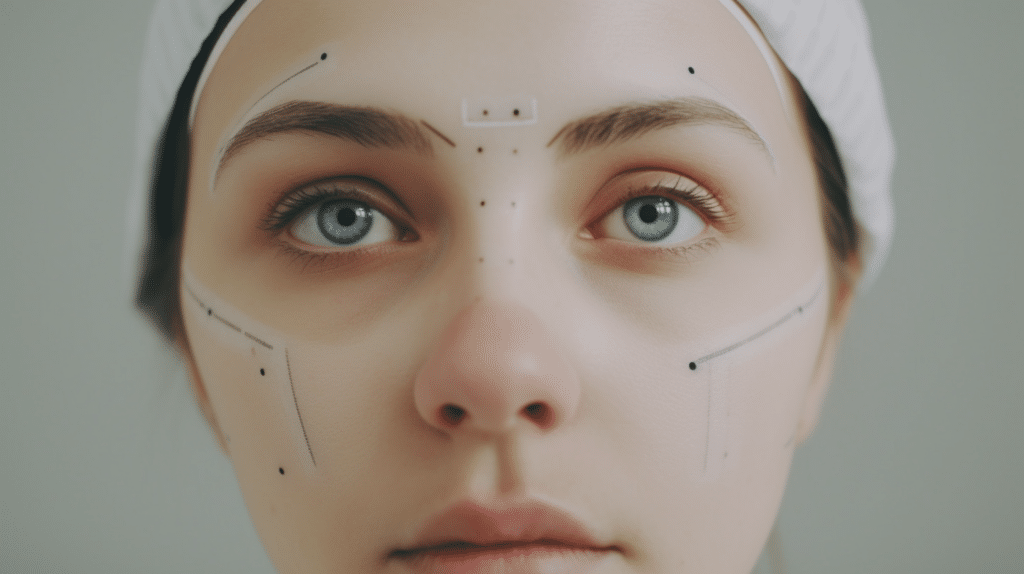Other Free NCLEX RN Study Guides:
There are 8 Modules in NCLEX RN Study Guide. Here you can navigate all the NCLEX RN Study guide modules.
- NCLEX Study Guide Home
- Module 1 | Managing Care Of the Patient
- Module 2 | Overall Safety and Control of Infections
- Module 3 | The promotion of health and maintenance
- Module 4 | Integrity in psychosocial functioning
- Module 5 | Providing Basic Care and Ensuring Patient Comfort
- Module 6 | Therapies: Pharmacological and parenteral
- Module 7 | Potential risk reduction
- Module 8.1 | Adapting physiologically
- Module 8.2 | Adapting physiologically
- Module 8.3 | Adapting physiologically
let’s get started right away.
Rehabilitation and functional status of patients

We begin this section by looking at activities of daily living (ADLs).
ADLs
The purpose of these activities is to determine a patient’s return to normal function after a surgical procedure, for example.
In other words, they will be expected to carry out these activities when they return home from the hospital like they once did before they were admitted.
Monitoring ADLs help in deciding what level of rehabilitation a patient may need (if any).
Determine the progression the patient is making during their rehab.
ADLs are grouped into three areas:
- Personal/physical
- Instrumental
- Occupational
Patient rehabilitation
A rehabilitation program helps patients recover from an injury or disease by improving or restoring their function.
Rehabilitation comes in many forms from physical therapy to drug and alcohol rehabilitation.
For physically and mentally ill patients, it can take the form of occupational therapy.
Settings for rehabilitation include:
- Long-term acute care in a hospital setting
- Subacute care units
- Inpatient rehabilitation facilities
- Outpatient rehabilitation facilities
Patients considered for any form of rehabilitation will undergo extensive evaluation first.
This is to determine if the rehab will be successful but also to prevent any secondary complications.
Occupational therapy
This is the use of creative activities when treating people who are disabled either physically or mentally.
The aim is to give them the skills that they need to live a full life and be as independent as they can.
Whatever their maximum potential is, this is the level they should reach following the therapy.
This is achieved by giving patients various interventions that are built around whatever disability they suffer from.
This includes a visit to the home of the patient as well as their place of work to help provide adaptive solutions to any problems that may inhibit them.
Patients receive specific training and will have their various skills assessed on a regular basis.
Coworkers, friends, caretakers, and family of the patient will be educated by the occupational therapist as well.
Training: Bowel and bladder

Bladder training
There are several different approaches when it comes to bladder training which your coursework includes, and they are:
- Scheduled toileting: This is when a patient uses the toilet according to a schedule, usually every two to four hours
- Habit training: Based on a toilet diary, this looks at matching a patient’s voiding habits with scheduled toileting
- Prompted voiding: This sees the patient ask to go to the toilet and is often used in nursing homes
- Bladder retraining: Here, patients are encouraged to hold the urge to urinate and only do so according to a schedule. This is used as an attempt to help restore regular bladder function as it was before, if possible. In around 80% of incontinence cases, this will help.
Bowel training
Progress is charted through the use of a bowel diary when it comes to this form of training.
This diary will include the following:
- Scheduled defecation
- If stimulation was necessary, for example, drinking hot fluid
- Position
- If there was any straining
- If exercise helps to increase bowel motility
As a way to manage fecal impaction or constipation, there are a number of strategies that can be considered including:
- Manual impaction removal
- Enemas
- Drinking more fluids
- Exercise
- Stopping medication that might cause constipation
- Monitoring fluid intake and diet
- Monitoring fiber intake
Fiber is very important in this regard as it helps with bowel movements.
Assessment: Wounds and skin

The origins of the wound should be evaluated during the initial assessment.
This ensures that the right treatment is provided for it.
Wounds can result in a number of different ways including:
- Pressure
- Arterial
- Venous stasis
- Diabetic neuropathy/ischemia
- Trauma
- Burns
- Infection
You can read up on each of these in more detail in your coursework.
Assessment: Oxygenation
When carrying out an oxygenation assessment, the following should be noted:
- Color of the skin
- Respiratory rate
- Oxygen saturation
- Blood gas analysis
- Blood lactate level
- Altered mental state
Assessment: Neurological/Neurovascular
This includes the following:
- Assessment of the cranial nerves
- Muscle inspections
- Assessment of balance
- Sensory assessment
- Checking reflexes
- Developmental status
Assessments: Wounds
When wounds are assessed, start with the location:
- In front or the anterior
- Behind or the posterior
- Above or the superior
- Below or the inferior
To work out the side of the wound, you need to determine the dimension and this is done by multiplying the length by the width and the depth.
Let’s talk about wound bed tissue as well.
- Granulation tissue is usually slightly grainy, has a deep pink to bright red color, is moist to the touch, and will easily bleed when disturbed
- Clean non-granular tissue isn’t healing and takes on a smooth appearance. In terms of color, it is deep pink or red
- Hypergranulation tissue is above the level of the periwound tissue. This is flaccid tissue and is excessive. Usually, this shows that the wound has excess moisture
- Epithelization will be found on the edges of the wound at first, but will cover the whole wound eventually. It’s light pink or violet in color and dry to the touch
- Slough adheres to the wound and is soft and yellow gray in color. This is a viscous necrotic tissue
- Eschare comes about when tissue dies and this necrotic tissue has a hard dark brown and leathery texture
When it comes to wound margins, these should be described by color, skin texture, and wound edges.
As for wound distribution, this should be delineated clearly, especially if an area contains more than one lesion.
Lesion arrangement can be described in three basic ways: linear, satellite, or diffuse
Assessment: Ulcers (arterial, neuropathic, venous)
This is critical in distinguishing between the venous, arterial, or neuropathic origin of the ulcer.
First, look at the location.
- Arterial: Found on non traumatic healing wounds, at pressure points, and on the end of the toe
- Neuropathic: Found on toes, the side of the feet, metatarsal heads, and on the plantar surface
- Venous: Found on the medial malleolus and between the ankles and knees
Second, look at the wound bed.
- Arterial: Necrotic and pale in appearance
- Neuropathic: Red/ischemic
- Venous: Contains fibrinous slough and is dark red
Third, look at the exudate.
- Arterial: Often in infections, there usually is a slight amount
- Neuropathic: Often in infections, there usually is a moderate to large amount
- Venous: There usually is moderate to large amounts
Fourth, look at the wound perimeter.
- Arterial: Well-defined and circular
- Neuropathic: Well-defined and circular but will have a callous formation more often than not
- Venous: poorly defined and irregular
Fifth, look at wound pain.
- Arterial: Extremely painful
- Neuropathic: As a result of reduced sensation, there is no pain usually
- Venous: Varied pain
Sixth, look at the skin.
- Arterial: Usually shiny and with little hair. It is friable and pale in color and will have elevational pallor and dependent rubor
- Neuropathic: With comorbidity, ischemic signs may be apparent
- Venous: Edemas are common while ankles and shins show a brownish discoloration
Lastly, look at pulses.
- Arterial: Usually weak and in some cases, not present at all
- Neuropathic: Less in neuroischemic ulcers but commonly present
- Venous: Present
While on the subject of wounds, look through your coursework where it covers wound complications.
These include chronic inflammation, undermining, and wound tunneling.
Classification of wounds

These are the most common ways in which wounds are classified:
- Vascular wounds
- Neuropathic wounds
- Pressure ulcers
- Traumatic wounds
- Surgical wounds
- Infected wounds
- Self-inflicted wounds
- Dysfunctional healing wounds
As part of this, you should read your coursework that covers the Modified Wagner Ulcer Classification system for Foot Ulcers.
This uses a graded system, from grade 0 (no open ulcers but at risk) to grade 5 (amputation required due to the whole foot having gangrene).
You will also find a reference to the S(AD) SAD Classification System, which also uses grades but takes into account five categories.
These are area, depth, sepsis, arteriopathy, and denervation.
Pressure ulcers

Ulcer assessment should always begin by determining whether it is a pressure ulcer or not as this can impact the overall treatment schedule.
These steps should also be followed:
- Classification of the ulcer based on the size thereof, characteristics, and according to the stage of development
- The pain the patient associates with the ulcer should be noted
- If a protocol is in place deeming it necessary, photos of the ulcer should be taken
- Each day, the ulcer should be monitored for any changes, and these noted should they occur
- Check the ulcer for infection often
Causes
What causes pressure ulcers?
Well, there are three main reasons:
- The intensity of the pressure
- The duration of the pressure
- The tissue’s tolerance to that pressure
Management
To start, patients should be encouraged to be more mobile, if possible.
Ultimately, lying in bed and placing pressure on certain parts of their body are how pressure ulcers occur.
Some patients cannot be mobile due to the fact that they are bed bound.
For this reason, they should have their positions changed often and can receive active bed exercises if possible, or passive ROM exercises to help in this regard.
A plan of activities devised by an occupational therapist is a necessity for those patients that have limited mobility.
Fecal incontinence should also be controlled and measures put in place to do so that tissue doesn’t deteriorate further.
This can increase the chances of pressure ulcers developing or contaminating those that are already there.
As for incontinence, once the reason for it has been determined, a strategy to control it can be put in place.
Prevention
In a medical facility, all patients should be assessed when it comes to pressure ulcers and specifically as per their own individual risk factors.
These risk factors include:
- Immobility and inactivity
- Incontinence and moisture
- A nutritional state that’s poor
- Friction
- Sensation that’s decreased
- Fragile skin
- Some medications
Pressure can be reduced by turning and repositioning patients as well as by using support surfaces as a way to stop pressure ulcers from starting.
This is all thoroughly covered in your coursework and you can browse through it there.
Interventions: Alternative, complementary, non-pharmacologic
While conventional medical treatment is often how patients are helped, this can be used in conjunction with other complementary therapies.
This includes:
- Whole medical systems
- Mind-body medicine
- Biological medicine
- Manipulation
- Energy medicine
These are all thoroughly explained in your coursework and if you are unsure what each section entails as listed above, you can look it up there.
Postmortem: Care and services

Postmortem care
Once a patient passes away, decomposition of the body will start.
This starts as the red blood cells break down and the blood vessels get more permeable in a process known as livor mortis.
This causes blood to pool in different parts of the body and is known as lividity and the body takes on an overall gray color.
Rigor mortis
Muscles will stiffen and the deceased’s limbs will become extremely rigid.
When a patient dies, muscle tissue breaks down, which is why they become stiff for up to four days afterward.
Postmortem care
In order for the body to be taken to the morgue, it must first be properly prepared.
It should always treat the deceased’s body with the utmost respect, so the first thing to ensure is that everything is done behind curtains.
In addition to placing dentures in the mouth, if the deceased’s eyes are open, they should be closed by the staff.
The body is then washed and covered while machinery should be removed and areas dressed where a line has been inserted.
If the patient is still attached to any drips, tubes, or machines, remove them and dress the areas where there may have been a line insertion.
The patient’s body is then placed in a plastic body bag and placed on a morgue cart before being labeled.
Consult your coursework for the procedures when it comes to death pronouncement as well as what documentation will be needed.









